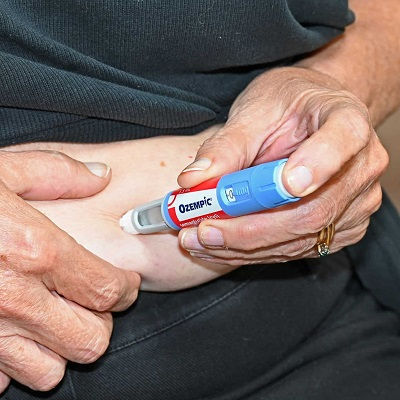Turbinate Reduction and Nasal Valve Collapse: What’s the Connection?
- aliza khan
- May 26
- 5 min read
For many individuals struggling with chronic nasal obstruction, breathing difficulties, or sinus issues, turbinate reduction is often a recommended solution. When paired with septoplasty, this procedure can significantly improve nasal airflow. However, it’s essential to understand the possible relationship between turbinate reduction and nasal valve collapse, especially for those considering the Best Septoplasty & Turbinate Reduction in Muscat. Awareness of how these two anatomical elements interact is crucial for making informed decisions and ensuring long-term surgical success.
Nasal breathing relies on a delicate balance between internal structures. When turbinate tissue is reduced too aggressively or without proper consideration of nasal valve integrity, complications can occur. In this article, we’ll explore the link between turbinate reduction and nasal valve collapse, signs to watch for, prevention strategies, and what to expect during recovery.
Understanding the Turbinates and Their Function:
What Are Turbinates?
Turbinates are bony and soft tissue structures located along the sidewalls of the nasal cavity. They are responsible for filtering, humidifying, and warming the air we breathe. There are three turbinates on each side—inferior, middle, and superior—with the inferior turbinates being most commonly addressed during surgery.
When turbinates become chronically enlarged (hypertrophied), they can obstruct airflow, causing nasal congestion, sinus infections, and mouth breathing. Turbinate reduction surgery aims to shrink this tissue to open the nasal airway without compromising the vital functions they serve.
Surgical Approaches to Turbinate Reduction:
There are several methods of turbinate reduction, including radiofrequency ablation, submucosal resection, and partial turbinectomy. The approach used often depends on the severity of the hypertrophy, patient anatomy, and surgeon preference. Those opting for the best septoplasty & turbinate reduction in Muscat are likely to undergo a customized procedure suited to their unique nasal structure.
While effective, these procedures must be performed with great care to avoid creating too much space in the nasal passage, which can inadvertently weaken other structures like the nasal valve.

The Nasal Valve: A Critical Airway Gateway:
What Is the Nasal Valve?
The nasal valve is the narrowest part of the nasal airway and plays a crucial role in controlling airflow resistance. It is made up of the junction between the septum, the lower edge of the upper lateral cartilage, and the head of the inferior turbinate. Even small changes in this area can dramatically affect breathing.
When the nasal valve becomes weak or collapses inward during inhalation, it results in significant airflow reduction—often described as a sensation of “nasal collapse” or blockage, especially during physical exertion.
Nasal Valve Collapse: Structural and Functional Aspects:
Nasal valve collapse can be structural, resulting from weakened cartilage or scarring, or functional, caused by negative pressure during inhalation. It often manifests after nasal surgery when critical support structures are altered. Understanding how this ties into turbinate reduction is vital for preventing post-operative complications.
How Turbinate Reduction Can Lead to Nasal Valve Collapse:
Over-Resection and Airflow Imbalance:
One of the most common causes of nasal valve collapse following turbinate reduction is excessive resection of the inferior turbinates. When too much tissue is removed, it can destabilize the valve region by removing a key structural component that supports the lateral nasal wall.
Without the counterbalance of the turbinates, the lateral wall may be more susceptible to collapse during inhalation. This is especially true in patients who already have naturally weak cartilage or narrow nasal valves.
Post-Surgical Scarring and Stiffness:
Even when the procedure is done conservatively, some patients develop internal scar tissue that affects the elasticity and function of the nasal valve. In rare cases, this may contribute to a sensation of obstruction or collapse, even if the physical structure remains unchanged.
Experienced surgeons performing the best septoplasty & turbinate reduction in Muscat often evaluate nasal valve function pre-operatively to mitigate these risks through strategic planning.
The Role of Negative Airflow Pressure:
After turbinate reduction, the nasal cavity may allow more rapid airflow, especially if both turbinates and the septum are addressed simultaneously. This increase in airflow speed can create a vacuum-like effect in the nasal valve area, drawing the soft tissue inward during inspiration. The phenomenon is particularly noticeable during exercise or deep breathing.
Identifying Symptoms of Nasal Valve Collapse:
Patients recovering from turbinate surgery should be aware of the signs of nasal valve collapse, as early intervention can prevent long-term discomfort. Common symptoms include:
Difficulty breathing through the nose, especially during inhalation
A sensation that one or both nostrils are collapsing
Audible whistling or fluttering noises when breathing
Worsened nasal obstruction during exercise or lying down
Limited relief despite open nasal passages
If any of these signs emerge during recovery, it’s important to consult with a nasal specialist who can conduct a thorough assessment.
Prevention Strategies for Nasal Valve Collapse:
Preoperative Assessment:
A thorough pre-surgical examination is the first step toward avoiding nasal valve issues. This may include nasal endoscopy, airflow resistance tests, and a Cottle maneuver, which helps evaluate nasal valve strength by manually widening the nostril.
When selecting the best septoplasty & turbinate reduction in Muscat, ensure your surgeon performs a detailed evaluation of your nasal valve. This helps to identify any pre-existing weaknesses that could become problematic after surgery.
Conservative Tissue Removal:
Less is often more when it comes to turbinate reduction. A conservative approach preserves enough tissue to support the nasal structure while still improving airflow. Submucosal resection—where only internal tissue is reduced—can be especially effective in maintaining outer support.
Surgeons who prioritize tissue preservation not only reduce the risk of valve collapse but also avoid complications like empty nose syndrome, which is another result of overly aggressive turbinate removal.
Combining with Nasal Valve Support Techniques:
In cases where nasal valve weakness is suspected, supportive procedures may be performed during surgery. These include:
Alar batten grafts: Cartilage grafts that support the nasal sidewalls
Spreader grafts: Thin cartilage placed between the septum and upper lateral cartilage
Flaring sutures: Techniques that reinforce the lateral cartilage during respiration
Adding these elements during turbinate reduction can preemptively address valve concerns and create more stable, long-term results.

Treatment Options If Nasal Valve Collapse Occurs:
Non-Surgical Management:
If nasal valve collapse is mild, non-invasive methods may be used. These include:
Nasal dilator strips
Internal nasal stents or cones
Nasal sprays to reduce inflammation
While these do not fix the underlying structural issue, they can provide temporary relief, particularly during sleep or physical activity.
Surgical Repair:
If conservative measures fail, surgical intervention may be needed. Revision surgeries often involve grafting cartilage from the ear or rib to rebuild and support the nasal valve area. These are specialized procedures and should only be performed by surgeons with extensive experience in functional rhinoplasty.
Patients who initially received the best septoplasty & turbinate reduction in Muscat and later experience valve collapse may benefit from consultation with their original surgical team, as they will be most familiar with the internal anatomy and previous interventions.
Recovery and Monitoring Post-Turbinate Reduction:
The Importance of Follow-Up:
Consistent follow-up appointments are essential in the weeks and months following turbinate surgery. These check-ups allow your provider to:
Evaluate nasal airflow and symmetry
Identify early signs of valve weakness
Monitor healing and scar tissue formation
Any concerns can be addressed promptly, avoiding more serious complications.
Long-Term Outcomes:
Most patients undergoing turbinate reduction experience a marked improvement in nasal breathing and quality of life. When performed conservatively and in the right anatomical context, the risk of nasal valve collapse is minimal. With a focus on personalized care, balanced reduction, and supportive techniques, surgeons can optimize outcomes and minimize side effects.
Final Thoughts:
Understanding the relationship between turbinate reduction and nasal valve collapse empowers patients to make informed decisions. While the risk of collapse is relatively rare, it remains an important consideration for anyone pursuing nasal surgery.



Comments